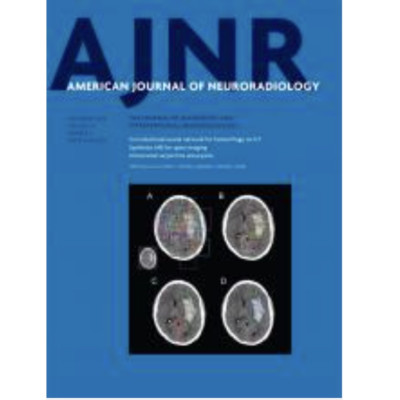Publication
Morphologic features on MR imaging classify multifocal glioblastomas in different prognostic groups
J. Pérez-Beteta, D. Molina, M. Villena, M. Rodríguez, C. Velásquez, J. Martino, B. Meléndez, A.R. de Lope, R. Morcillo, J. Sepúlveda, A. Hernández, A. Ramos, J. Barcia, P. Lara, D. Albillo, A. Revert, E. Arana, V.M. Pérez-Garcia
American Journal of Neuro-radiology 40 (4) 634-640 (2019).
MOLAB authors
Abstract
BACKGROUND AND PURPOSE: Multifocal glioblastomas (ie, glioblastomas with multiple foci, unconnected in postcontrast pretreat- ment T1-weighted images) represent a challenge in clinical practice due to their poor prognosis. We wished to obtain imaging biomarkers with prognostic value that have not been found previously.
MATERIALS AND METHODS: A retrospective review of 1155 patients with glioblastomas from 10 local institutions during 2006–2017 provided 97 patients satisfying the inclusion criteria of the study and classified as having multifocal glioblastomas. Tumors were segmented and morphologic features were computed using different methodologies: 1) measured on the largest focus, 2) aggregating the different foci as a whole, and 3) recording the extreme value obtained for each focus. Kaplan-Meier, Cox proportional hazards, correlations, and Harrell concordance indices (c-indices) were used for the statistical analysis.
RESULTS: Age(P????.001,hazardratio????2.11,c-index????0.705),surgery(P????.001,hazardratio????2.04,c-index????0.712),contrast-enhancing rim width (P ???? .001, hazard ratio ???? 2.15, c-index ???? 0.704), and surface regularity (P ???? .021, hazard ratio ???? 1.66, c-index ???? 0.639) measured on the largest focus were significant independent predictors of survival. Maximum contrast-enhancing rim width (P ???? .002, hazard ratio ???? 2.05, c-index ???? 0.668) and minimal surface regularity (P ???? .036, hazard ratio ???? 1.64, c-index ???? 0.600) were also significant. A multivariate model using age, surgery, and contrast-enhancing rim width measured on the largest foci classified multifocal glioblastomas into groups with different outcomes (P ???? .001, hazard ratio ???? 3.00, c-index ???? 0.853, median survival difference ???? 10.55 months). Moreover, quartiles with the highest and lowest individual prognostic scores based on the focus with the largest volume and surgery were identified as extreme groups in terms of survival (P ???? .001, hazard ratio ???? 18.67, c-index ???? 0.967).
CONCLUSIONS: A prognostic model incorporating imaging findings on pretreatment postcontrast T1-weighted MRI classified patients with glioblastoma into different prognostic groups.















